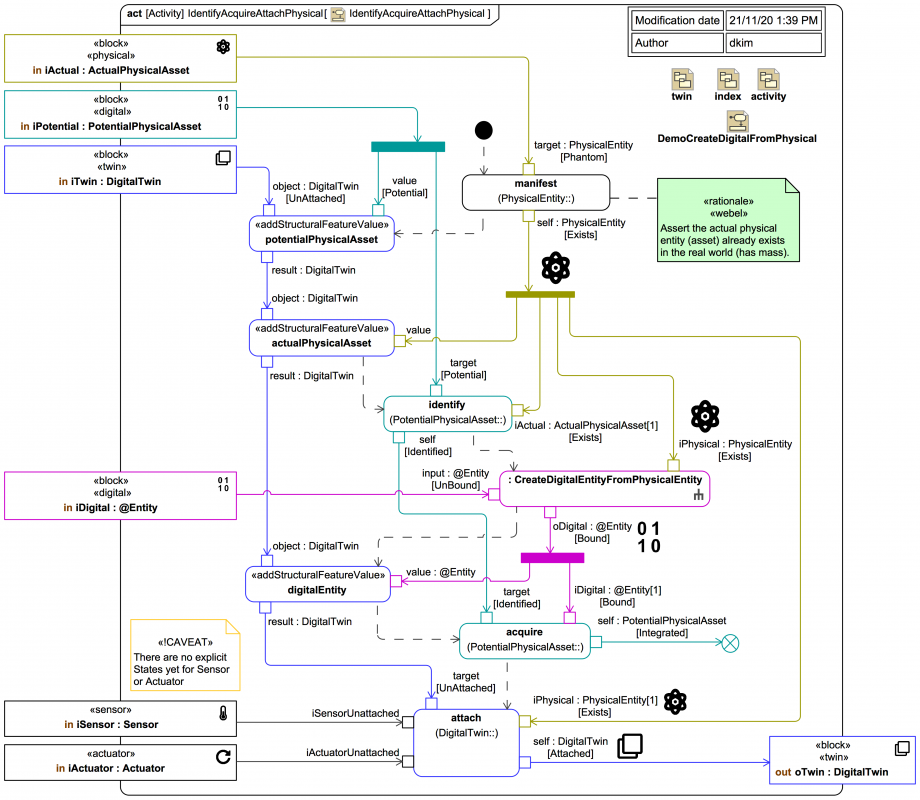Tags and keywords
ActualPhysicalAsset :The «physical» ActualPhysicalAsset - which in this acquisition scenario pre-exists somewhere in the world and apparently just really wants to be twinned - starts in the state Phantom (which just means the «twin» DigitalTwin and «digital» ![]()
@Entity don't know it exists yet). The CallOperationAction for manifest results in it transitioning to Exists.
The «digital» ![]()
PotentialPhysicalAsset "tracker" in state Potential is then assigned to the UnAttached «twin» DigitalTwin followed by the «physical» ActualPhysicalAsset .
The «physical» ActualPhysicalAsset is then set as the tracking target of the «digital» ![]()
PotentialPhysicalAsset via the CallOperationAction for identify, and the «digital» ![]()
PotentialPhysicalAsset changes to state Identified.
The invoked Activity CreateDigitalEntityFromPhysicalEntity will be inspected in detail next, but for now just note that it will populate the initially UnBound «digital» ![]()
@Entity with any model data or materials data or other information that can be gleaned through measurement, scanning, surveying etc. (EXCEPT process-related data). The result is a «digital» ![]()
@Entity that is Bound.
The «digital» ![]()
@Entity is then assigned as the unique digitalEntity of the «twin» DigitalTwin .
The CallOperationAction for acquire causes the «digital» ![]()
PotentialPhysicalAsset to transition to the state Integrated after which its tracking job is done, recalling:
The CallOperationAction for attach connects the «twin» DigitalTwin and the «sensor» Sensor and/or «actuator» ![]()
Actuator (so twinning synchronisation can occur) and the «twin» DigitalTwin is then in state Attached.
(Indeed, an initial synchronisation is performed at the top level as shown in the previous slide.)


